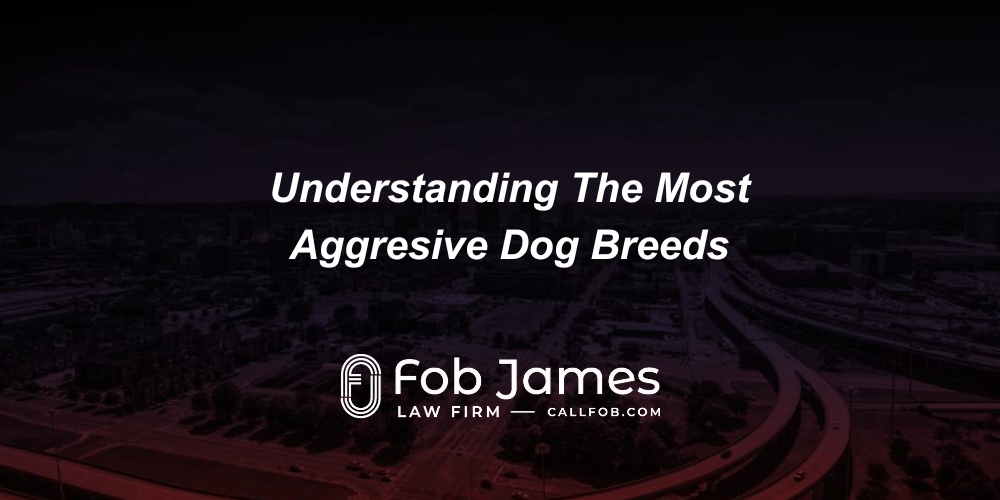
Dog breeds are as diverse as they are numerous. Each breed has its unique traits, behaviors, and characteristics.
Among these breeds, some like Pit bulls are often labeled as aggressive. This perception can be influenced by various factors, including media portrayal, personal experiences, and societal beliefs.
However, labeling a dog breed as aggressive can be misleading. It’s crucial to understand that aggression in dogs is not solely determined by their breed.
Factors such as genetics, training, socialization, and environment play significant roles in a dog’s behavior. A dog’s individual personality and experiences also greatly influence its behavior.
We want to clear up misconceptions about aggressive dog breeds. It is important to evaluate each dog as a unique individual. Our goal is to promote informed, responsible, and compassionate dog ownership.
Defining Dog Aggression
Dog aggression is a complex concept encompassing various behaviors. It can manifest in four different forms:
- Territorial aggression – protecting their space
- Protective aggression – defending family or pack members
- Possessive aggression – guarding toys, food, or resources
- Fear-induced aggression – reacting when the dog feels threatened
Understanding the root cause of aggression is vital for effective management. Identifying the type of aggression helps in determining the appropriate response. This understanding is the first step toward reducing or preventing such behaviors.
Factors Contributing to Aggresive Dog Behavior
Several factors can contribute to a dog’s aggressive behavior. Understanding these factors can help in managing and preventing aggression. Often, it’s a combination of different influences that lead to such behaviors.
Aggression usually comes from a mix of influences:
- Genetics and breed traits – some dogs were bred for guarding or fighting
- Training and socialization – poor or abusive training increases risks
- Environment – chaotic or abusive homes fuel fear and aggression
- Owner behavior – negligent owners create dangerous situations
The complex interplay of these factors can shape a dog’s temperament. Genetics may predispose certain breeds to aggression, while inadequate training might exacerbate it. Environmental stresses, such as chaotic living conditions, also play a significant role.
Responsible ownership is crucial. It involves recognizing these factors and taking proactive steps. By addressing each aspect, aggression can be managed more effectively.
GENETICS AND BREED CHARACTERISTICS
Genetics plays a large role in a dog’s behavior. Certain breeds have been historically bred for specific purposes, influencing their aggression levels. For instance, breeds like Rottweilers were used in guarding, which may explain their protective nature.
It’s important to note that genetics alone doesn’t determine aggression. Breed characteristics might predispose a dog to certain behaviors, but individual temperament varies widely. Responsible breeders consider both genetics and temperament to produce well-rounded dogs.
TRAINING AND SOCIALIZATION
Early training and socialization are critical in shaping a dog’s behavior. Dogs exposed to various people, animals, and environments tend to be more adaptable. A well-socialized dog is less likely to react aggressively out of fear or territoriality.
Training techniques also influence aggression levels. Positive reinforcement methods encourage desirable behavior without invoking fear.
Conversely, harsh training tactics can lead to fear-based aggression. Consistent, positive training fosters trust and reduces the likelihood of aggression.
ENVIRONMENT AND OWNER BEHAVIOR
A dog’s environment significantly impacts its behavior. A stable home environment with predictable routines can prevent stress-related aggression. On the other hand, chaotic or abusive environments increase anxiety and aggression.
Owner behavior is also pivotal in shaping a dog’s disposition. Responsible owners provide adequate exercise, mental stimulation, and consistent rules. Owners who understand dog body language and respond appropriately can mitigate potential aggression.
Inadequate management and supervision from owners can lead to behavioral issues. Understanding and addressing environmental and owner influences are essential for promoting a calm, balanced dog.
Misconceptions About Aggressive Dog Breeds
Misconceptions about aggressive dog breeds abound, often fueled by media portrayals and sensational stories.
Myth: Some breeds are naturally vicious.
Reality: Any breed can bite if poorly trained or mistreated.
Myth: Aggressive breeds can’t be rehabilitated.
Reality: With proper socialization and training, many aggressive dogs can improve.
Myth: Only large dogs are aggressive.
Reality: Even small breeds can act aggressively.
It’s crucial to assess each dog individually, rather than relying on breed stereotypes.
The Role of Responsible Ownership
Responsible dog ownership plays a crucial role in managing aggression effectively. Owners need to understand their dog’s unique needs and behaviors. This includes providing appropriate training and socialization from an early age.
Creating a positive environment is equally important. Consistency and routine give dogs a sense of security, reducing anxiety-related aggression. Owners should also ensure their dogs receive adequate physical and mental stimulation to keep them balanced and content.
Lastly, owners must recognize their role in preventing incidents. Using humane training methods and positive reinforcement helps shape well-adjusted behavior.
Owners should also remain vigilant about their dog’s interactions, ensuring they’re safe and positive. Overall, understanding and commitment are key to fostering a well-behaved pet.
Understanding and Managing Aggression
Understanding dog aggression requires recognizing its various forms and triggers. Dogs might exhibit aggression due to fear, territorial instincts, or a need to protect their owners. To manage these behaviors, it is vital to approach each case with patience and insight.
Effective management includes identifying early signs of aggression and addressing them promptly. This requires vigilance and knowledge of dog body language to prevent escalation. By understanding the underlying causes, owners can implement appropriate strategies to mitigate aggressive tendencies.
A tailored approach to management considers both the individual dog’s personality and the broader environmental factors.
Owners can employ a variety of methods to help their dogs feel secure. Effective strategies include:
- USING POSITIVE REINFORCEMENT
- ENSURING REGULAR EXERCISE
- PROVIDING MENTAL ENRICHMENT
- ENGAGING IN CONSISTENT TRAINING METHODS
RECOGNIZING WARNING SIGNS
Recognizing early warning signs of aggression in dogs is critical. Common indicators include growling, snapping, or an erect tail. Other signs might be more subtle, such as rigid body posture or avoidance behavior.
Understanding these signs helps prevent potential incidents. Awareness of changes in a dog’s behavior is necessary for timely intervention. Owners can then take steps to redirect their dog’s focus and promote calm behavior. This proactive approach reduces the likelihood of aggression escalating.
IMPORTANCE OF EARLY SOCIALIZATION
Socialization plays a pivotal role in a dog’s development. Early exposure to diverse environments and situations helps a dog become well-adjusted. This process minimizes fear-based aggression as the dog becomes comfortable with various stimuli.
Puppies should be introduced to other animals, humans, and new environments. This exposure should be gradual and positive. A well-socialized dog is more adaptable and less likely to react aggressively in unfamiliar situations. Establishing positive experiences helps create a balanced and sociable companion.
TRAINING AND POSITIVE REINFORCEMENT
Training with positive reinforcement creates a strong foundation for good behavior. This approach involves rewarding desired behaviors instead of punishing unwanted ones. Rewards can include treats, praise, or play, which encourage dogs to repeat positive actions.
Using positive reinforcement nurtures trust between a dog and its owner. It fosters a learning environment where the dog feels secure and motivated. Consistent training helps instill confidence, reducing potential aggression linked to insecurity. By using positive methods, owners can effectively guide their dogs toward desirable behaviors.
What Are The Most Aggressive Dog Breeds?
Certain breeds often receive labels as aggressive or dangerous due to their history and reputation. These perceptions form from media portrayals and anecdotal evidence. Pit Bulls, Rottweilers, and German Shepherds are among the most discussed breeds in this context.
Despite negative perceptions, these breeds can be loyal and gentle when raised in nurturing environments. It’s crucial to understand that aggression often stems from individual circumstances. This highlights the importance of proper training and socialization.
For many dog owners, breed labels can feel misleading and unfair. Personal experience often contradicts widespread stereotypes. It’s helpful to differentiate between potential aggressiveness and typical breed behavior. When managed well, even the most feared breeds can become beloved family members.
Here are some breeds frequently cited as aggressive:
- PIT BULLS
- ROTTWEILERS
- GERMAN SHEPHERDS
Understanding these breeds requires an objective view of their history, characteristics, and needs.
🐶 Pit Bulls
Historically breed for fighting, many Pit Bulls are gentle companions in loving homes. They thrive with proper socialization and consistent training. Owners often describe them as affectionate and loyal pets, challenging negative stereotypes.
Even though many Pit Bulls are safe pets, the reality is that the majority of dog bite attacks we see involve Pit Bulls. In alot of cases, the Pit Bull seems to “snap” unexpectedly. This leads us to believe that Pit Bulls are among the most aggresive dog breeds.
According to a study from DogsBite.org, between 2005 and 2019, Pit Bulls accounted for 66% of all fatal dog attacks in the United States.
While many are affectionate family pets, their unpredictability and strength make them high-risk.
Safety tip: Never leave children unattended with a Pit Bull.
🐶 Rottweilers
Rottweilers serve as both family dogs and working companions. They possess strong protective instincts, often mistaken for aggression. This breed’s imposing size and strength can intimidate those unfamiliar with it.
Proper training channels the Rottweiler’s natural guarding behavior. They excel when given clear leadership and a structured environment. When nurtured correctly, they become reliable protectors and affectionate friends.
However, an unsocialized, untrained Rottweiler can absolutely be aggressive. Below are are keys facts about the Rottweiler breed:
- Known for strength and guarding instincts.
- The 2nd most aggressive breed based on fatalities
- Responsible for nearly 10% of fatal dog attacks (2005–2019).
- With proper training, they can be loyal family protectors, but unsocialized Rottweilers can be dangerous.
Satefy Tip: Exercise the appropriate precautions when you or your children are near a Rottweiler.
🐶 German Shepherds
German Shepherds often join ranks with other guard breeds due to their intelligence and loyalty. Their history as police and military dogs adds to their image as aggressive. People often see them as versatile working dogs with admirable traits.
In suitable homes, German Shepherds can be gentle and playful family dogs. Early socialization helps them adjust to various environments. When their energy and intelligence are engaged, they become well-balanced and loving pets.
However, when not properly trained or socialized, a German Sheperd’s protective instincts can escalate into aggression. If a Germam Shepherd thinks one of its “people” are in danger, they can be aggresive. Their size and strength make bites especially serious.
- Known for intelligence, loyalty, ane protectiveness.
- The 3rd most aggressive breed based on fatalities.
- Responsible for 4.6% of fatal dog attacks.
- With proper socializatoin
Satefy Tip: Excersise precaution and never leave children alone with a German Sherpherd you are not famliar with.
Preventing Dog Bites and Attacks
Owners must take proactive steps in training and managing their dogs. A well-trained dog is less likely to act out aggressively.
Prevention starts with responsible ownership:
- Provide early socialization and consistent training.
- Use positive reinforcement, not fear-based discipline.
- Supervise dogs around children and strangers.
- Understand dog body language to recognize warning signs.
For communities, education and awareness about responsible pet ownership are critical in reducing dog bite incidents.
Legal Implications of Owning Aggressive Dog Breeds
Owning a breed labeled as aggressive often carries legal responsibilities. Dog owners may face:
- Breed-specific legislation (BSL) requiring muzzles, fencing, or insurance.
- Liability lawsuits if their dog attacks someone.
- Homeowner’s insurance restrictions that exclude coverage for dangerous breeds.
Contact a Dog Bite Attorney For Legal Help
Our Birmingham dog bite attorneys have experience representing victims who have suffered injuries due to a dog attack.
We understand the frustrations and stresses that come after being injured and strive to get you the compensation you deserve.
Expect kindness, compassion, and top-quality legal representation with Fob James Law Firm.
👉 Call today for a free case review with an experienced dog bite lawyer in Birmingham, AL. We’ll explain your rights and fight for the compensation you deserve.
